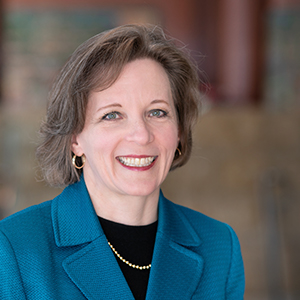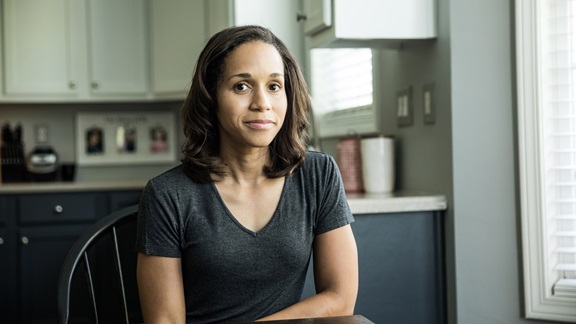Homeownership, long seen as a key part of the American Dream, is a path to economic prosperity and household wealth for many Americans. Despite one of the nation’s highest overall homeownership rates, Minnesota’s racial and ethnic homeownership gap—that is, the disparity between the White homeownership rate and the homeownership rate of households of color and Native American households—is the fourth-largest in the nation.1 This persistent—and, for some racial and ethnic groups such as Black Minnesotans, increasing—gap has resulted from a series of racist policies and practices. For generations, while government and private financial institutions have actively subsidized homeownership for White households, these institutions have erected barriers that exclude Black households, other households of color, and Native American households from the same opportunities.
Gaps have deep-seated historical roots
Explicitly and implicitly racist policies and practices barred many Native American families and families of color from the federal government’s massive investments in homeownership through the twentieth century. Starting in 1910, home-sale contracts in Minnesota often stipulated that White buyers could not resell their homes to members of other races or ethnicities. While the U.S. Supreme Court decreed in 1948 that such racial covenants were legally unenforceable, their continued use led to the Minnesota State Legislature outlawing new racial covenants in 1953 and decreeing covenants illegal in 1962.2
After its creation in 1934, the Federal Housing Administration (FHA) buoyed White homeownership by insuring home mortgages, thus allowing for lower down payments and more affordable monthly payments. However, not only did the FHA encourage racial covenants and other types of deed restriction in its 1935 underwriting manual, the federal government’s Home Owners’ Loan Corporation (HOLC) systematically excluded Native Americans and people of color from credit based on a series of maps. HOLC color-coded neighborhoods into four levels of credit risk. The maps warned lenders that neighborhoods outlined in red—the origin of the term “redlining”—would be “high-risk” largely because of their racial and ethnic composition. Not surprisingly, from 1934 to 1962, 98 percent of federally backed FHA loans nationally went to White home buyers.
At the neighborhood level, extralegal intimidation and discrimination further depressed Black homeownership. When Black families tried to move into White enclaves, White people often organized and threatened violence; for example, Arthur and Edith Lee faced a mob of 4,000 people demanding that the Black couple leave the home they had purchased in South Minneapolis in 1931.
After World War II, White soldiers accessed the GI Bill to buy homes in newly built suburbs. While the GI Bill was nominally race-neutral, in practice, nearly all who benefitted from its generous provisions were White. Meanwhile, nonbank lenders designed predatory products to target the Black families shut out of the new mortgage system. These were often contracts for deed, which came with higher interest rates, did not enable the home’s residents to build equity, and offered little or no consumer protections (Baradaran 2017).
Black and brown neighborhoods also suffered economic fallout from another policy designed for the benefit of White suburbs: the construction of highways. As the nation built its freeways, state and local officials often plotted them through city neighborhoods with the highest concentrations of people of color, such as St. Paul’s Rondo neighborhood, a thriving Black community divided and largely destroyed by the construction of Interstate 94 in the 1960s. Facing intimidation and, in some cases, sledgehammers wielded by the police, Rondo residents whose homes were slated for demolition received only a fraction of their value as compensation.
The Fair Housing Act of 1968 and other legislation through the 1970s banned housing discrimination and explicitly discriminatory lending practices. However, systemic barriers remain. For example, despite the legal prohibition, evidence remains of real estate agents steering Black home buyers to neighborhoods with higher shares of households of color.
Research suggests that, in the run-up to the Great Recession, lenders sold borrowers in Black neighborhoods riskier loan products than those sold in White neighborhoods. Combined with greater unemployment, these loan products meant that Black and Latino/a households were more likely to face foreclosure during the Great Recession. Even today, Black and Latino/a homeowners are more likely than White households to have their homes financed through unconventional loan products.
Minnesota’s homeownership gap is among the largest in the nation
Nationally, the homeownership rate for Black Americans increased from 23 percent to 42 percent from 1940 to 1970. And, after the Civil Rights Era, the national homeownership rates for most races and ethnicities continued to increase until the Great Recession. Minnesota, however, followed a different trend. After the federal government began encouraging homeownership, the White homeownership rate in Minnesota increased steadily from 55 percent in 1940 to 77 percent in 2019. The homeownership rate for Minnesota households of color and Native Americans—who in 2019 collectively represented 15 percent of Minnesota households—decreased from 46 percent in 1940 to 44 percent in 2019.
The Black homeownership rate peaked in Minnesota in 1950 and has fallen almost every decade since then. In 1950, the gap in homeownership rates between Black Minnesotans and White Minnesotans was about 20 percentage points. Nearly 70 years later, that gap has more than doubled; it is now 50 percentage points wide. Homeownership among Latino/a households slipped from 51 percent in 1970, the first year data are available, to 43 percent in 2000, then started to increase, reaching 49 percent in 2019.
The disparity between the White homeownership rate and the homeownership rate of households of color and Native American households in Minnesota is now the fourth-largest in the nation.3 This large racial and ethnic homeownership gap is the result of both Minnesota’s high homeownership rate for White households—sixth-highest among the 50 states and Washington, D.C.—and Minnesota’s relatively low homeownership rate for households of color and Native American households, which ranks 37th-highest.
Socioeconomic differences alone don’t explain the variation
Compared to most other racial and ethnic groups in the state, White Minnesota households are more likely to be employed, have higher incomes, and be older. They are less likely to be immigrants (or to have moved to Minnesota from another state).4 Each of these differences is associated with a higher homeownership rate. For example, the median income for White households, $77,843 in 2019, is nearly double the median income of Black households ($41,570) and Native American households ($40,051).
However, differences in observable household characteristics only explain part of the homeownership gap. Using an approach developed by the Metropolitan Council, we adjust for these differences across racial and ethnic groups. We find that if Asian, Native American, Latino/a, and Black households had the same observable characteristics as White households, the homeownership rate among:
- Black households would still be 33.0 percentage points lower than that of White households,
- Latino/a households would still be 9.0 percentage points lower,
- Native American households would still be 9.6 percentage points lower, and
- Asian households would no longer be statistically different from that of White households.
Homeownership requires access to credit
For most households that pursue homeownership, home mortgages are a necessity. Even decades after the end of government-sponsored redlining, racial and ethnic disparities in access to mortgages persist. Native American applicants and applicants of color are much more likely to be denied a mortgage loan than their White counterparts. In 2019, lenders denied less than 1 in 16, or 6.0 percent, of White mortgage applicants from Minnesota. By contrast, lenders denied 8.3 percent of Asian applicants, 17.0 percent of Latino/a applicants, 13.4 percent of Black applicants, and 24.8 percent of Native American applicants.
White applicants tend to have higher incomes, more savings, and higher credit scores. But it remains unclear whether and to what extent these factors can account for the higher credit approval rates of White Minnesotans. One paper focused on the Minneapolis-St. Paul metro area found that a higher share of households of color had their loan applications denied than White households at rates not solely attributable to applicants’ socioeconomic characteristics, such as credit risk or applicants’ income (Myers, Lee, and Toney 2015).
A lack of intergenerational wealth limits homeownership
The previous analyses do not include what could be a key variable driving gaps in homeownership rates: the vast differences in household wealth among races and ethnic groups in Minnesota. Whereas some White households purchasing their first home may be able to turn to their families’ wealth for down-payment assistance, fewer households of color and Native American households have that option.
In Minnesota, the median net worth of White households is $211,000, compared to the median net worth of $0 for Black households and $18,000 for Latino/a households. Minnesotans of Asian descent, like Asian Americans generally, have a wider spread in their net worth. Among Asian households in Minnesota, the 25th percentile—that is, the point in the distribution where 75 percent of all households have more wealth and 25 percent have less—amounts to $17,000 (below that of Whites) but the 50th percentile amounts to $358,000 (well above that of Whites).5
Even when they are able to attain homeownership, households of color face additional hurdles. One national study estimates that a typical home in a majority-Black neighborhood is undervalued by $48,000 due to racist perceptions of worth, reducing by an estimated $156 billion the total wealth of homeowners in Black neighborhoods. Other research shows that returns to homeownership have been significantly larger for White families than for Black and Latino/a families (Killewald and Bryan 2016). One study of national data found that homes in Black neighborhoods appreciate at slower rates (Zonta 2019), and a study of a large county in Texas suggests that appraisers undervalue homes in Black and Latino/a neighborhoods (Howell and Korver-Glenn 2018). In the seven-county Twin Cities region, analysis of county assessors’ data finds that the higher the share of people of color in a census tract, the lower the median estimated market value.
Paradoxically, even as these homes are undervalued, research suggests that they are overtaxed. In Minnesota, this leads to high real estate assessments relative to market values for homes owned by Black and Latino/a households and a disproportionately higher tax burden for many of Minnesota’s Black and Latino/a homeowners.
Grounding policies in a better understanding
Minnesota’s racial and ethnic disparities in homeownership today reflect generations of barriers that limited homeownership and its wealth-building advantages to White households. In short, White households could more easily acquire property, which was more likely to increase in value and generate wealth. White households then passed much of that wealth on to the next generation of homeowners—their White, young-adult children.
In Minnesota, at least 64,000 households of color and Native American households rent their homes even though they are in the prime home-buying age range—that is, ages 25 through 44—and earn enough income6 to afford homeownership (Governor’s Housing Task Force, 2018). While policy solutions to address these deep-seated gaps are outside the scope of this article, leaders contemplating policies to help these households transition to homeownership should ground their solutions in an understanding of not only the scale of racial disparities but also the systemic issues that sustain these disparities. Homeownership gaps limit economic opportunity for households today and for generations to come.
The authors thank John Patterson and Alyssa Wetzel-Moore for inspiration and insightful comments and Matt Schroeder for his analytical support.
Endnotes
1 U.S. Census Bureau American Community Survey (ACS) 1-Year Estimates and authors’ calculations.
2 For more on the history of racial covenants in Minnesota, see the University of Minnesota’s Mapping Prejudice project, which is working to identify and map homes in the Twin Cities area that had covenants in place.
3 See endnote 1.
4 ACS Public Use Microdata Sample 2015–2019 Estimates and authors’ calculations.
5 Survey of Income and Program Participation (SIPP) 2014 Panel Data and authors’ calculations. As SIPP sample sizes are small at the state level, these estimates are necessarily imprecise.
6 According to Minnesota Housing, income thresholds at which households with the right home, mortgage product, and supports can achieve successful homeownership are $40,000 in the Twin Cities metropolitan area and $35,000 for Greater Minnesota.
Libby Starling is Senior Community Development Advisor in Community Development and Engagement at the Federal Reserve Bank of Minneapolis. She focuses on deepening the Bank’s understanding of housing affordability, concentrating on effective housing policies and practices that make a difference for low- and moderate-income families in the Ninth Federal Reserve District.








